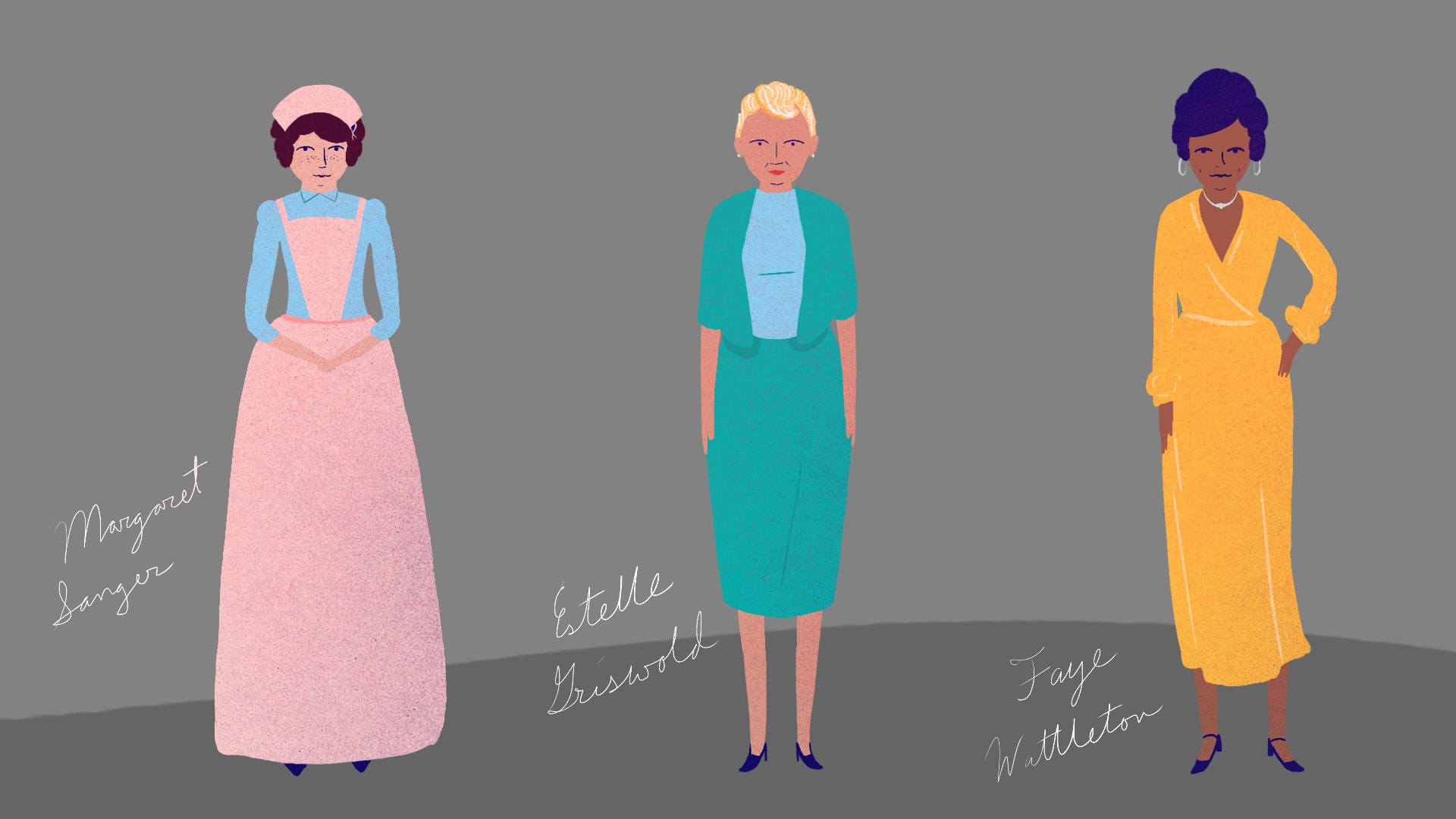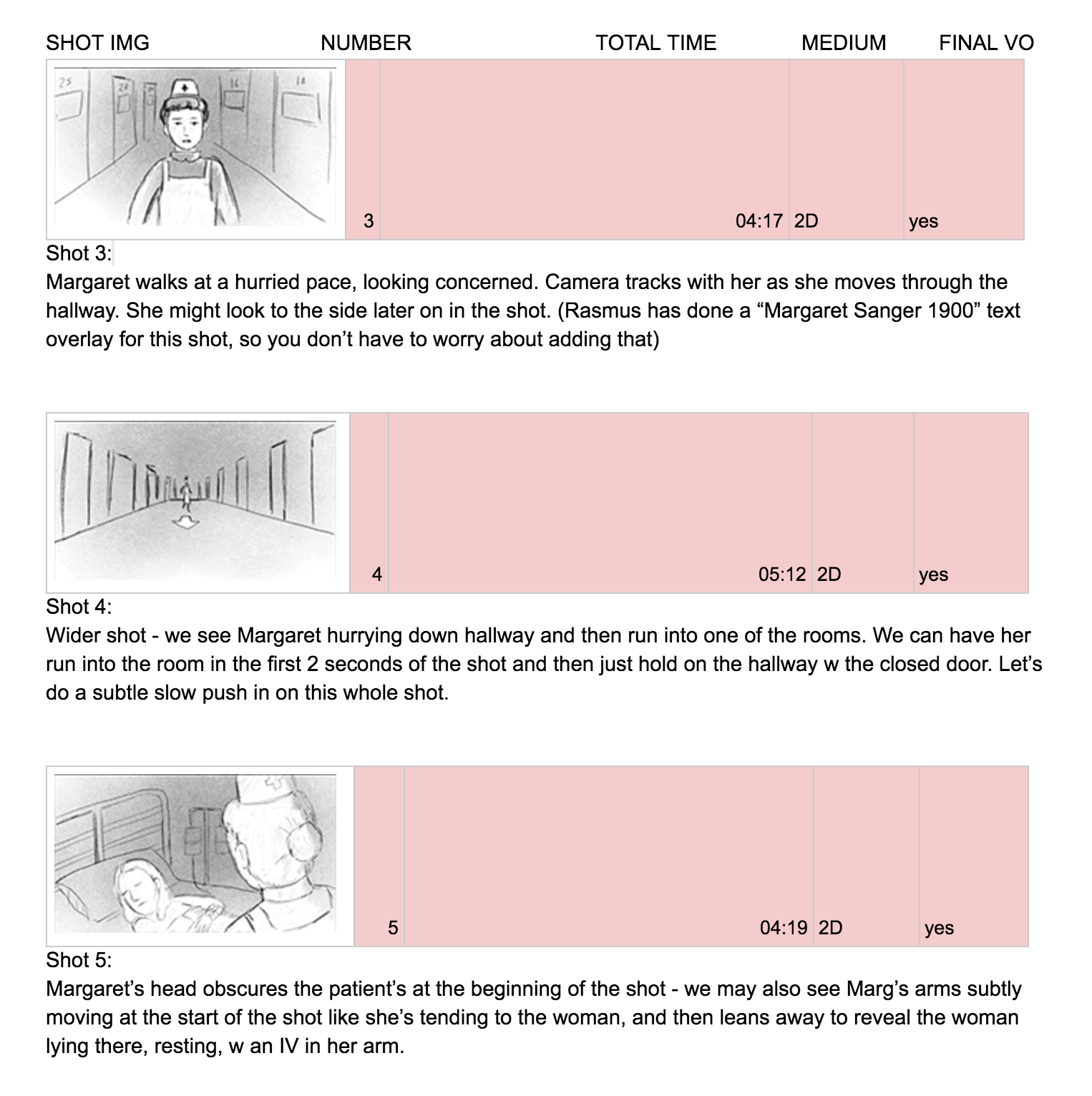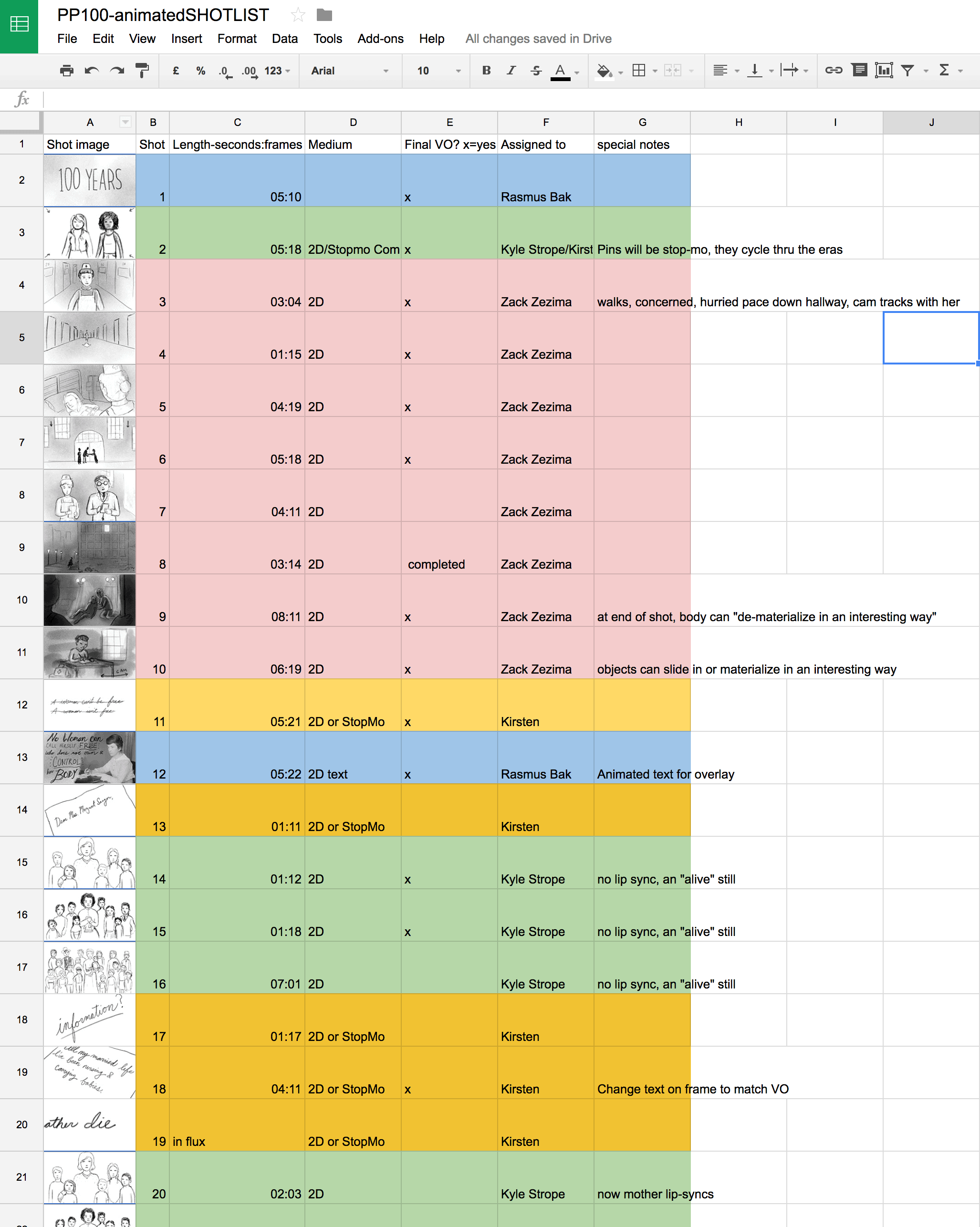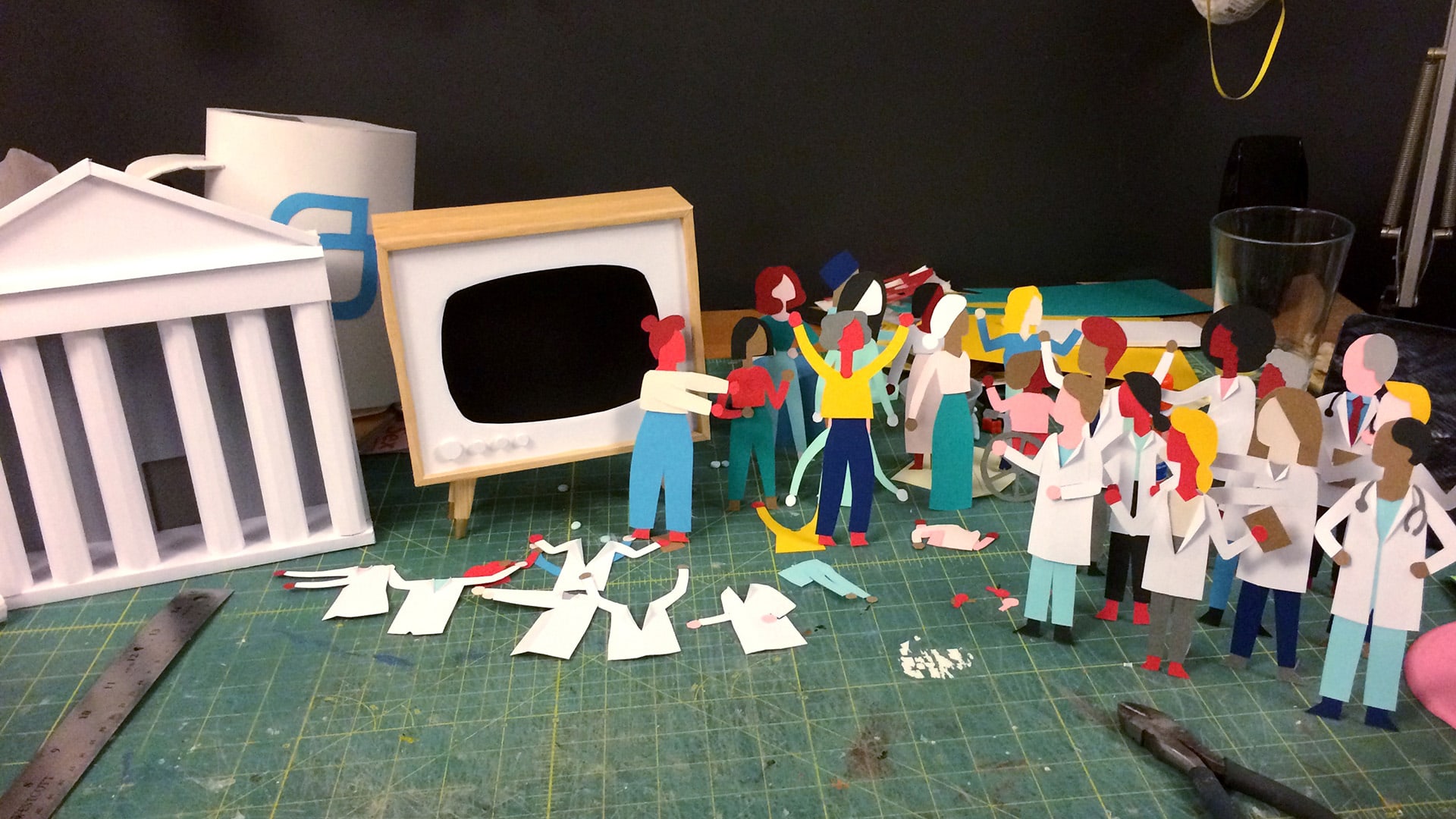At times like these, it’s ever so important that we use animation as a means of telling meaningful stories. Thankfully, Kirsten Lepore is here fighting the good fight.
Kirsten is a stop-motion animation director who’s responsible for the first ever stop-motion episode of Adventure Time. She’s also a member of the much-loved Late Night Work Club and has worked on a wide range of projects that run the gamut of animation. Suffice it to say, she’s kind of a big deal!
Most recently, Kirsten teamed up with Lena Dunham and a team of amazing animators to create an advocacy film for Planned Parenthood and as you can see above, the results are wonderful!
Thankfully, Kirsten agreed to answer a few of our questions about her process and inspiration behind making this great film.
Q&A with Kirsten Lepore
First, congrats on the new film, it’s spectacular! Can you tell us how the project came about?
Thanks so much! I got this gig in probably the most serendipitous situation of my whole career: At the awards ceremony during last year’s Sundance film festival, I just narrowly made it into this backstage celebration area right after my husband won a Director’s award for his film Swiss Army Man. Lena Dunham had been one of the judges, and I somehow ended up chatting with her and a few others when out of the blue she mentioned that she was looking for a stop-motion animation director for a project. It was too bizarre – I sort of raised my hand and was like… “weird – I’m a stop-motion director” and a week later was on a call about the project. When I found out it was for Planned Parenthood, I didn’t even need more details – I was IN.

That’s amazing. What was it like co-directing with Lena Dunham?
It was wonderful! I feel like she and the rest of the team really put their trust in me and allowed a ton of creative freedom. It was a really smooth collaboration and I feel like Lena and I were totally on the same page with the direction of the video. This was a huge asset, as we were physically in different locations for the most part and had to split up responsibilities most of the time. For example, Lena handled all the voice record direction with the actresses, while I’d be in communication with the animators, as well as animating myself. We’d make most of our decisions over email correspondence, which ended up being really efficient. Also our producers Natalie Berkus and Andrew Lee did an amazing job keeping on top of everything and handling a ton of stuff behind the scenes. They really helped everything flow smoothly.
Of course I have to ask… JJ Abrams making the music… How did that come about?
Haha. I still haven’t actually met J.J. in person, but I’m told he and Jack Antonoff had a jam session to an early cut of the film and then gave some great timing notes based on that. Once we had picture lock, he and Jack did the final pass which was pretty spot on – there were minimal musical changes beyond that. J.J. and his wife Katie McGrath were involved from the start though, as his company Bad Robot supported a lot of the production.
And what was it like directing him?
I wish I had a better story on this one, but my only interaction was giving a couple small notes that were funnelled through the producer. HI J.J. BIG FAN OF WESTWORLD!
On the creative end, you had some really amazing animators on the project. How did you manage the remote team and were there any tricks you learned along the way that you’d recommend?
Oh man, I feel so lucky to have gotten such great animators on board! Everyone really nailed it! It’s crazy, of the 4 animators, Zack is the only one I know IRL. I’ve yet to meet Kyle, Olivia or Rasmus, but through the magic of the internet, I’d say the collaboration process was fairly seamless. One trick I learned though is don’t get married in the middle of a big job, or you’ll be on your honeymoon in Japan finalizing character designs whenever you can find wifi. In all honesty though, I didn’t mind that. I think the best trick I learned was to be as organized and clear, communication-wise, as humanly possible.

With so many people coming together were there any restrictions put in place to keep things cohesive or was it a bit of a free for all?
Yeah! That was the #1 thing I was worried about in bringing all these different styles together. I hoped that color would be our big unifier, so I put together a palette for us all to work from.

This also made color correction a bit easier for me down the line. I sent style frames and references to the animators to help guide the look a bit, and also really carefully considered which shots to assign to which animators based on their strengths and interests.
Production wise, I imagine you storyboarded the film and distributed shots. Can you elaborate on your process?
I storyboarded the film based on the script and created an animatic before getting most of the animators onboard so that I really knew what our needs were.

It also helped give them a better sense of the film and the amount of animation that would be required on their part. It was definitely a hefty amount of animation, so not everyone who was initially interested was able to swing that kind of time commitment, understandably. Along with the animatic, I also created a simple shotlist in Google Sheets. (I basically copied what Claudio Salas had done with his “The Wisdom of Pessimism” short, since it was such a brilliant system)

This shotlist ended up being really crucial for me in organizing all of the animator’s and my responsibilities. I color coded the shots into groups that I thought would be best tackled by the same person. I also tried to give the animators choices of color groups so they had some say in the shots they were taking. Once everything was assigned, I had each animator send me a style frame or two of what they were thinking, visually. Once that was decided on, I sent out animator-specific google docs with more detailed direction for each shot.
We’re kind of in a golden age of advocacy films. What are your thoughts on this and what do you think animation’s advantage is when it comes to telling these stories?
I would guess advocacy films are on the rise since short videos spread so well on the internet and are able to reach more eyes that way than with the old broadcast PSA route. From a selfish perspective it’s great too – as it’s generally way more gratifying to work on something like this than on an advertisement. And yes, I agree that animation usually does have the upper hand in advocacy films. For one, you can do a lot more on a shoestring budget than with live action, and I also think you can be less literal and more creative in the way you’re communicating a concept or portraying an event. This is always very exciting for me, as I love to experiment with new visual ideas and pieces like this tend to allow you more artistic liberties.
What (or who) were you inspirations for the film?
I didn’t really have a hand in the writing, but I’d just say that women in general, were my inspiration pulling me through the process. There were times when I would forget about the content of what we were working on and just get caught up in the inherent struggles of putting together an animated piece — but then I would take a step back and just be amazed at these women we were featuring in the piece and what they had accomplished and sacrificed. And it really sank in when I remembered that I’m a lady (i forget sometimes, tbh) benefitting from all the hard-fought battles of these ladies before me.

And your goals for the film?
I hope that people have a clearer perspective on how important Planned Parenthood is and how long they’ve been at it. I think their history is fascinating, and I hope we’re able to educate with this video and show how crucial this organization is to the lives of so many people.
Is it going to be hard for you to go back to making diaper commercials now (haha)?
Haha, I totally know what you mean. Luckily, I’ve somehow managed to *mostly* dodge a lot of soulless advertising and have gotten to work with some cool people and companies as of late. I should probably bite my tongue though as I might be needing some of that sweet, sweet diaper money to survive in the coming months, hah.
Finally, with this film under your belt, what’s next?
Gearing up to animation direct a feature in a couple months! I’m a bit nervous to tackle something this big, but also super excited. Fingers crossed! :)
Credits
A FILM BY
Natalie Berkus
Lena Dunham
Kirsten Lepore
Alex Ronan
IN COLLABORATION WITH
Lena Dunham
America Ferrera
Mindy Kaling
Jennifer Lawrence
Hari Nef
Andrew Rannells
Cecile Richards
Gina Rodriguez
Amy Schumer
Meryl Streep
Tessa Thompson
Constance Wu
Sasheer Zamata
DIRECTOR OF ANIMATION
Kirsten Lepore
ANIMATORS
Kirsten Lepore
Rasmus Bak
Olivia Blanc
Kyle Strope
Zachary Zezima
WRITTEN BY
Alex Ronan
DIRECTED BY
Lena Dunham & Kirsten Lepore
PRODUCED BY
Lena Dunham & Natalie Berkus
EXECUTIVE PRODUCERS
J.J. Abrams
Katie McGrath
Andrew Lee
Jenni Konner
Ericka Naegle
ASSOCIATE PRODUCER
Caren Spruch
MUSIC BY
Jack Antonoff & J.J. Abrams
SOUND DESIGNER / RE-RECORDING MIXER
Matt Yocum
ARCHIVAL RESEARCH
Amani Vance
ARCHIVAL MATERIALS PROVIDED BY
Sophia Smith Collection
Library of Congress
Streamline Films
Getty Images
Bettye Lane
Producers Library
Wellcome Library
The Texas Observer
The Associated Press
GandhiServe
SPECIAL THANKS
Michael Cohen
Ben Cooley
Tina Exarhos
Huy Nguyen
Emily Ovaert
Gretchen Rush
Nora Silver
Liz Watson
Faye Wattleton
Pineapple Street Media










